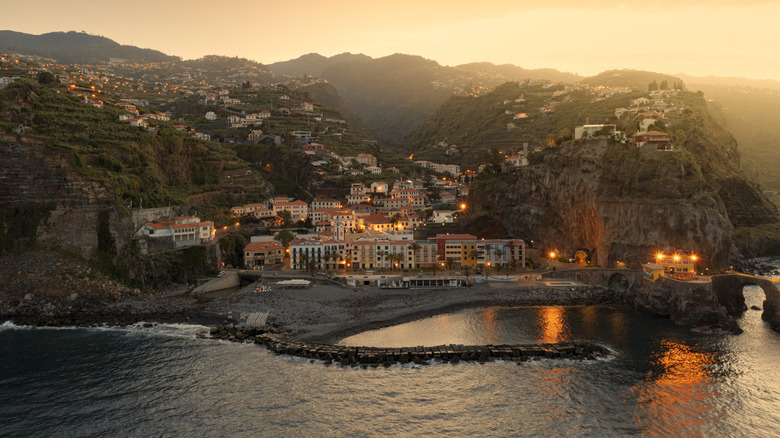One Of The Cheapest Island Destinations In Europe Has Unparalleled Water Views
European tourists paid an average of €97.6 (about $105) per night in 2023 for trips with overnight stays. That's up 11.8% from €87.3 ($94) the year before. Finding affordable spots with great scenery matters more than ever now. Madeira, Portugal, stands out with a different pricing structure. The average guesthouse rooms in Funchal started at €58 ($62) per night in 2023 – 40% below the EU nightly average.
Madeira has made it onto many lists of budget-friendly European islands. Dramatic coastal cliffs, sheltered bays, and volcanic rock sea-pools that give you ocean views for free or cheap. This recognition follows record tourism revenues. The Regional Directorate of Statistics reported the island's accommodation sector brought in €756.7 million (roughly $815 million) in 2024. That money helps the regional government maintain and improve public coastal amenities.
Waterfront views remain one of Madeira's most affordable luxuries. There are dozens of miradouros (public viewpoints) that show off ocean and mountain scenery without charging admission. You'll find them along the north and south coasts. Ribeira da Janela Viewpoint, for example, gives you green slopes against the Atlantic backdrop. Rocha do Navio Viewpoint provides access to a natural reserve. Together, these complementary coastal facilities let travelers experience Madeira's marine scenery without spending much of their income on ticketed attractions.
How to enjoy Madeira without overspending
Smart dining choices offer significant savings, helping travelers stick to reasonable vacation spending limits and avoid common travel spending mistakes. A typical one-course meal with drinks costs €15–€20 ($16–$22) at standard restaurants. Local dishes like espada scabbardfish usually cost around €14 ($15). The key to maximizing dining value lies in location strategy — Funchal generally commands higher prices than rural areas, so venturing outside the city center delivers better value for authentic Portuguese cuisine.
Beyond dining, coastal attractions add great value for water-based activities. In Funchal, the city runs four main bathing complexes through Frente Mar Funchal, giving people a cleaner, managed alternative to the busy beaches. Adult entry costs €5.90 ($6.35), kids 7–17 cost €1.95 ($2.10), and under-6s get in free. These complexes come with saltwater pools, sea access, changing rooms, and first aid.
Transportation costs across the island remain manageable through strategic planning. The Horários do Funchal connects most tourist destinations and hiking trail access points. Onboard tickets are €1.95 ($2.10) for adults and €0.95 ($1.00) for kids 6–12. Prepaid options drop that to €1.35 ($1.45) per ride. However, hiking now carries a small fee. The Institute of Forests and Nature Conservation charges €3 ($3.25) per person over 12 for popular trails like Vereda do Areeiro and Levada do Caldeirão Verde.
Timing your trip to Madeira for the biggest savings
Seasonal pricing in Madeira opens up big savings for careful travelers, especially during shoulder months. The Regional Directorate of Statistics of Madeira reported that November 2024's average daily rate reached €98.50 ($106) — up 20.2% from 2023. Compare that to August's €133.37 ($144). November rates ran about 26% lower. Visitor counts tell a similar story: 164,600 in November versus 211,300 in August, meaning 22% fewer people and less pressure on prices.
January offers the lowest accommodation rates in Madeira. Hotels average about €58 ($62) a night — roughly 76% less than August's €246 ($265) peak. Flights follow the same pattern, with January being the cheapest flight month to Madeira. Costs spike again by May and stay high through September. The best savings come from booking well in advance, with cheaper prices generally available the earlier reservations are made. Those planning January trips should book by October for the best prices.
Weather considerations support budget timing strategies. Madeira's subtropical weather makes March and November particularly appealing, with mild 16–20 degrees Celsius (61–68 degrees Fahrenheit) temperatures and lower costs outside peak season. April 2025 pulled in a record €73.5 million ($79.2 million) in tourism revenue, despite being a shoulder month, proving that travelers can enjoy prime conditions at reduced costs.


